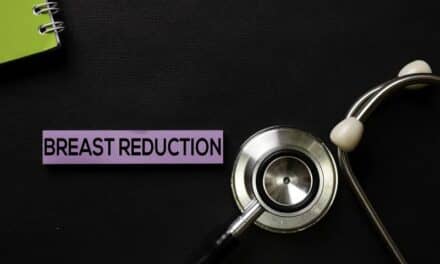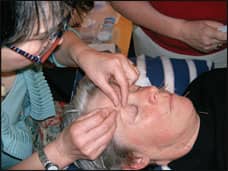Rebecca Hockaday noticed the spot on her breast toward the end of summer.
“I thought, okay, a freckle on my chest. I’ve been out in the sun, no big deal,” the Georgia mother of two remembered thinking.
But then a few more popped up, appearing as if the first one had spread. Several months later, Hockaday made an appointment with her dermatologist.
“Honestly, I thought they were sun spots. I thought they were going to say, ‘just your skin aging,’” she told TODAY. “Never in a million years did I think, okay, this is going to be cancer.”
A biopsy revealed that Hockaday, who was 35 at the time, had inflammatory breast cancer, a rare and aggressive form of the disease. The cancer had already spread to her lymph nodes by the time it was diagnosed, she said.
Inflammatory breast cancer, or IBC, doesn’t present itself like common forms of the disease, which is usually detected through a lump in the breast or a mammogram, said Dr. Jean Wright of the Johns Hopkins Breast Cancer Program.
“Half the time there’s no lump or anything like that. It’s just the kind of skin changes, and so it can relatively easily be mistaken for an infection, mastitis or something like that,” she said.
Redness or swelling of the breast are the usual hallmark for IBC. Sometimes, the skin may appear somewhat dimpled like an orange peel.
IBC makes up less than 2 percent of all breast cancer, said Wright, an associate professor of radiation oncology at Johns Hopkins.
“The most characteristic thing is that it happens very quickly. It’s usually within one month you notice these significant changes in the skin of (the) breast,” she said.




